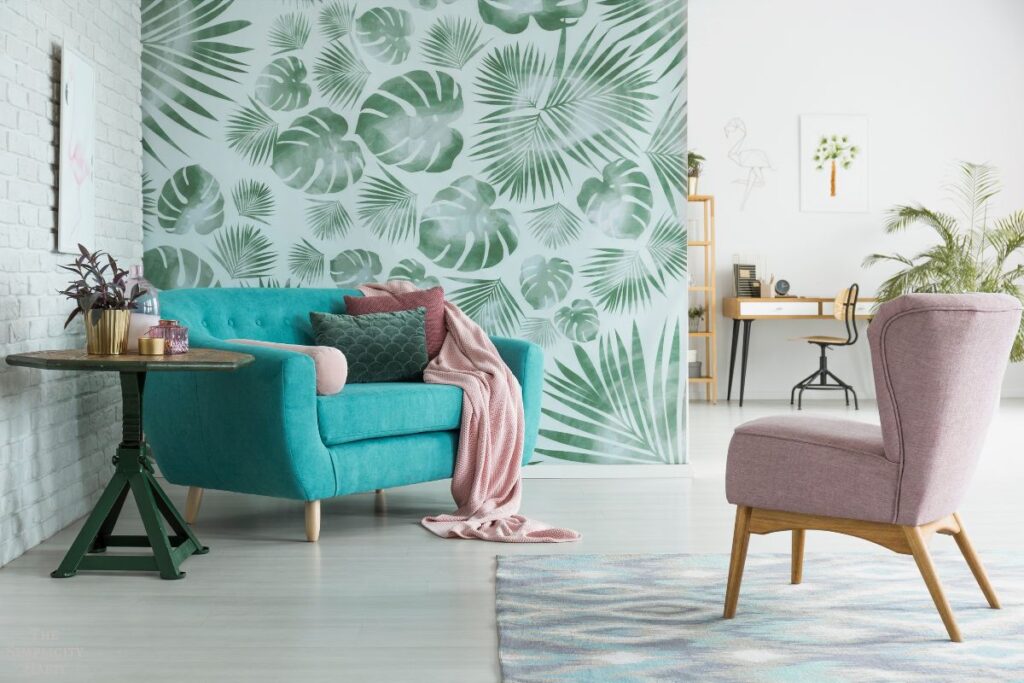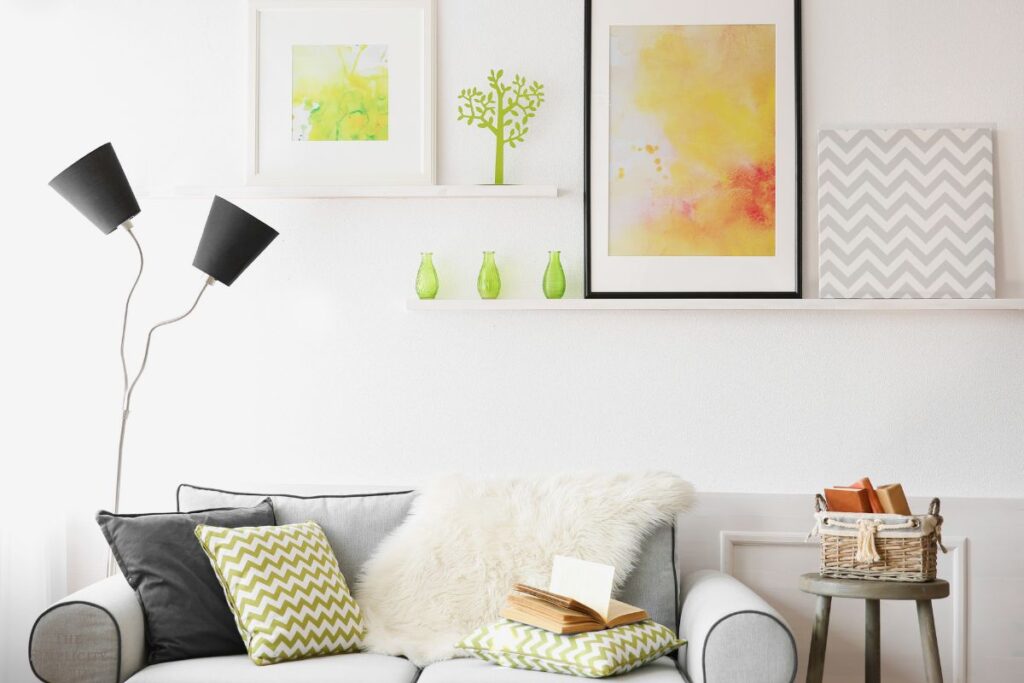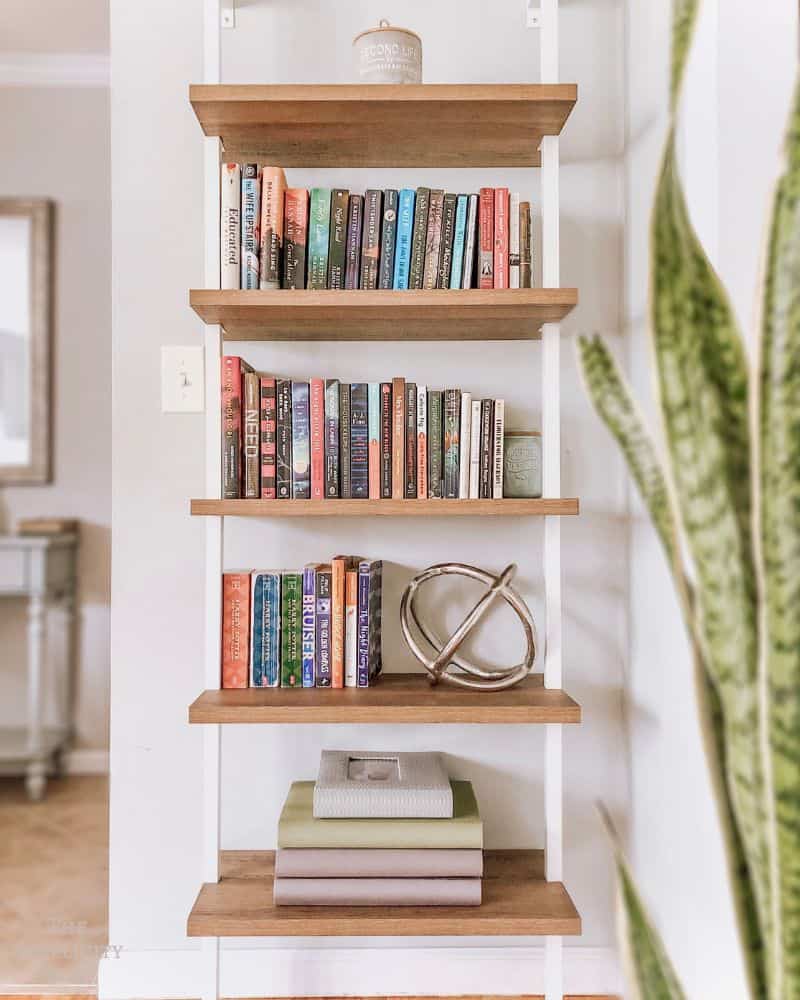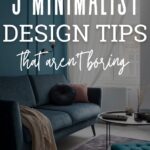Inside: Use these minimalist design tips to keep your home simple without it being boring.
A guest post by Rose Morrison
When you think of a minimalist home, what do you picture? Do you get a feeling of calm, airy, and bright or white, bland, and boring?
For some, minimalism design is an appealing strategy, with fewer items causing less clutter.
Many confuse its simplicity with a boring home, as it’s associated with neutral colors and empty spaces. That doesn’t have to be the case in your minimalist home, though.
Here are five minimalist design tips that demonstrate that minimalism doesn’t have to be boring.
What Is Minimalist Design?
While minimalism is more than just a home decor trend, for the purposes of this post we are focusing on minimalist home design.
Minimalism is a style growing in popularity due to its philosophy and simplicity. It’s about prioritizing essential, functional items while limiting frivolous decor and unused items.
It focuses on a neutral color palette, simple shapes and forms, and elegance without much ornamentation. It might seem simple, but a minimalist design is carefully planned to make the most of any home.
Often minimalist homes are thought to have an open floor plan, a lot of natural light, bright light fixtures, and highly functional furniture. Occassionally they use pops of color and texture sparingly to add personality to the home without removing the clean design.
You can have a minimalist home that is still cozy and welcoming.

Why Choose a Minimalist Design?
We live in a commercial society where it always seems like the more of something we have, the better. However, more people are experiencing the benefits of minimalism.
There are many advantages to a minimalist design, including the following:
- It’s less expensive: With fewer items, you’ll be spending less and can dedicate more of your budget to bills or experiences.
- You’ll have more space: With fewer items in your home, you’ll have more room for relaxation and activities.
- It’s easier to clean: You can clean your home much more easily with less clutter in it.
- It’s better for the environment: You reduce your carbon footprint by incorporating fewer single-use decor items into your home.
- Better mental health: With less physical clutter around you, you’re less likely to have mental clutter, helping you be more mindful and reduce mental health symptoms.
- Fewer things to worry about: When you have fewer items, you have less to worry about breaking, maneuvering around, and caring for on a regular basis.
From saving more time and money to feeling less stressed, there are so many benefits to be gained from choosing to live simply.
5 Non-Boring Ways to Incorporate Minimalist Design
Here are a few other things to know about enjoying the minimalist style and lifestyle without feeling like your personality has been stifled.

1. You Can Brighten the Space
The walls and floors in your room can brighten up even the barest minimalist space. White tile and lighter hardwoods help you avoid dullness in your home.
Refinish any beloved hardwood to make it shine or add a large area rug that you love to the space. You can combine these flooring options and use warmer neutrals or pops of color to create a welcoming modern minimalist environment.
Neutral colors which include whites, grays, and browns, are the foundation for a minimalist palette, but you can experiment with tones and lighting to add more dimension to your space. Using a yellow undertone can warm up an otherwise stark color, while a blue undertone can cool down a room with yellow lighting.
Balancing your light with different wall tones creates balance. You can combine neutrals along the walls and floors and selectively add pops of color based on the season or holiday or just your personal preference.

2. You Can Still Get Creative
There are a variety of ways you can get creative to add interest to your space while preserving a minimalist design.
Having a feature wall that’s either wallpapered or a color that you enjoy is a great way to add personality to a space without adding extra stuff.
Selecting a minimal number of decor pieces allows them to make a statement without being crowded out by many other pieces competing for attention.
Using vintage furniture is a great way to keep your home decluttered while adding interest and personality. Some of them can be repurposed from their initial use. Old dressers can transform into a desk or vanity. A bench can be a coffee table or a stepstool and vice versa.
Artwork is a fun addition to any minimalist home when you use it strategically. Patterned rugs, designed pillows, sculptures, and wall art are options to add more enjoyment to any minimalist space.

3. You Can Play With Shape and Texture
It’s fun to play with texture in your minimalist home, with wood, wool, velvet, corduroy, and metal just some of the different textures that can make your home visually interesting.
You can also add clay, beaded, or sparkling decor items to add more personality to a room. Or you can add board and batten to a wall to add character and dimension.
Plants are a great way to add color and softness to your minimalist home. Bouquets of flowers, hanging greenery, or tabletop succulents are some of the plant options available at many florists and garden centers.
Plants also have the advantage of helping to purify the air and help you connect with nature.

4. You Can Enjoy Sneaky Storage
Just because your home is minimalist doesn’t mean you have to completely sacrifice storage. You can utilize vertical wall space to install free-hanging shelves. Or you can also build shelves that blend in seamlessly with the rest of the room.
They can be used to store your favorite books, plants, or artwork. Use furniture with extra storage like ottomans, chests, and furniture with drawers. Utilizing these with geometric shapes or interesting textures can bring extra fun to your home.
Storage ottomans are also a sneaky way to have extra seating without tall or bulky furniture. You can display things in trays on top of a coffee table or shelf to easily access entertainment items.

5. You Can Take Your Time
You don’t have to display accents just to have them – sometimes, an empty wall leaves room to incorporate other elements into your home. Furniture, throws, and pillows can be more than enough to dress up your space.
However, you don’t have to hesitate to add personal touches around your home to bring your personality into it. The more functional an accent piece is, the better.
You don’t have to plan everything out in advance. Since minimalism follows the “less is more” philosophy, you can start small and change things as your tastes evolve and your household grows.
A great way to add more without overwhelming your home is the “one in, one out” method. As the name suggests, it involves getting rid of something when you purchase something else for your home to avoid visual or spatial clutter.
Creating decluttering habits in your home will help you to maintain your minimalist space.
Resist the temptation to add too many different elements at once or it can end up feeling a bit chaotic. Be selective and intentional with the pieces you add to your space.
Your space should reflect your personality while aligning with your preferred design aesthetic.
Using Minimalist Design at Home
Minimalism is an excellent design practice for anyone who wants to free themselves of clutter and have a clean and open design. It’s possible to have a minimalist home that still has a lot of personality and visual interest.
It’s far from boring if you aren’t afraid to take it slow, add selective pops of color or interesting elements, and incorporate your personality into your living space.
What’s your favorite minimalist design tip? Share it in the comments section.
Sign up on the form below to get weekly decluttering tips and inspiration sent straight to your inbox. You’ll also get the free 5 Areas to Declutter in 10 Minutes Checklist to help you get started decluttering today.



I like the rooms with throws, art on the walls, plants, cushions — even a wreath. But they are not what I mean by minimalist.